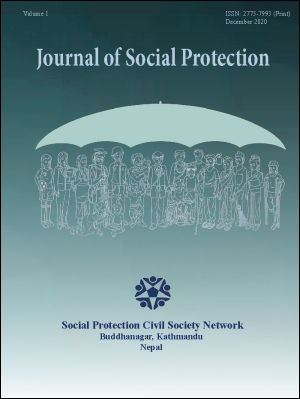Review and Assessment of Public Expenditure on Social Assistance in Nepal
DOI:
https://doi.org/10.3126/jsp.v2i01.43774Keywords:
Adequacy, Coverage, Fiscal implications, Poverty, Social protection, Social assistanceAbstract
This paper provides an overview of the social protection programmes and expenditure trends over the ten-year period (FY2011-FY 2020) and presents an assessment of the social assistance programmes. The aim of the paper is to critically review the expenditure and assess the social assistance programmes in Nepal in terms of their coverage, adequacy, and outcomes. The paper uses quantitative data to analyse the expenditure trend and presents a qualitative assessment of social assistance relying on existing data and literature. At 3.9 per cent of the Gross Domestic Product (GDP) in FY 2019, Nepal spends a substantial amount of its budget on social protection. There is a sound legal basis for social protection programmes. However, the policy and institutional landscape remains fragmented and there are gaps in terms of its coverage and adequacy. Existing programmes do not address all risks and vulnerabilities comprehensively or adequately, by design. Few programmes explicitly target the economically poor or aim to reduce poverty. Important coverage gaps remain among those eligible for existing programmes, mainly due to implementation challenges. In addition, they are not scalable in design, mainly in terms of responding to shocks. Spending is heavily skewed towards the elderly with relatively low spending on early childhood. Finally, the paper also presents simulations to show that the fiscal implications of reforms to address some of these challenges over the next 10 years which implies that the reforms would result in moderate increase in the expenditure.
Downloads
Downloads
Published
How to Cite
Issue
Section
License
Copyright for articles is retained by the authors, with first publication rights granted to the journal.

